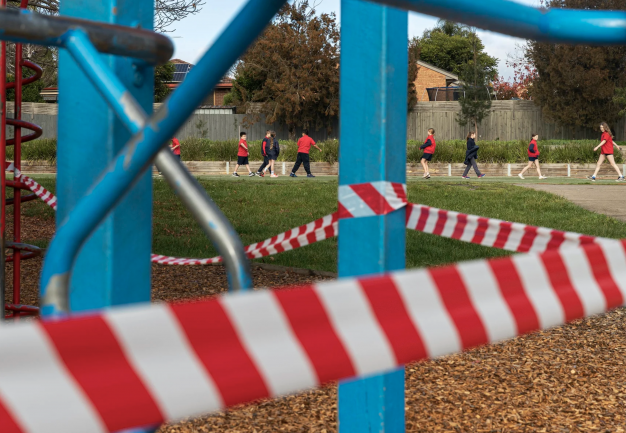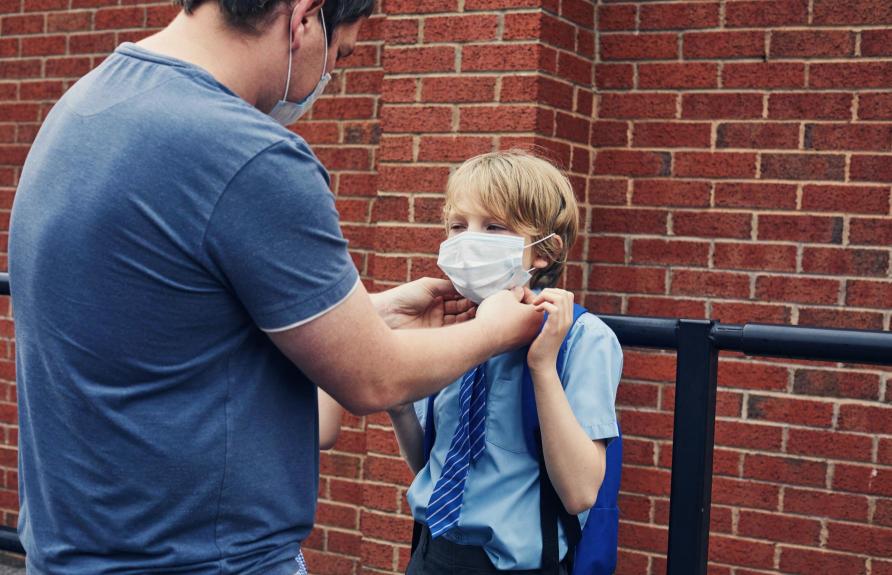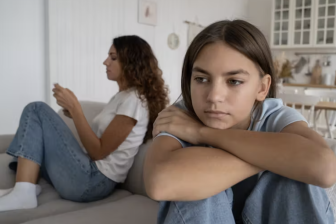
Should schools close during the COVID-19 pandemic?
Schools play a critical role for children – not only in providing education, social and emotional development, but also in offering critical support – especially for the most vulnerable of students.
The impact of school COVID-19 closures on the wellbeing of children and families cannot be underestimated; with a recent US paper finding an association with lower life expectancy.
School closures, physical distancing and lockdown restrictions disrupt children’s routines, cause confusion, anxiety and depressive symptoms, and post-traumatic stress. These also negatively impact on academic performance and home learning environments for all children.
This is without considering the impact on parental mental health and ability to work.
And this is a global issue. Many children of poor families will be absorbed into the workforce and never return to school. In low and middle income countries, there are increases in child marriage that are a major consequence of the pandemic directly related to school closures, especially for girls, with a lack of access to sexual and reproductive health services through school health programs.
It is vital to prioritise early childhood education and care (ECEC) and schools in any pandemic response, but to do so we need to understand the role of children in transmission and the role of schools in contributing to the broader community epidemic.
Role of children in transmission
Children get infected and transmit SARS-CoV-2. But emerging evidence suggests that children under 10 to 12 are at lower risk of transmitting SARS-CoV-2 than adolescents and adults.
 Emerging evidence suggests that children under 10 to 12 are at lower risk of transmitting SARS-CoV-2. Picture: Getty Images
Emerging evidence suggests that children under 10 to 12 are at lower risk of transmitting SARS-CoV-2. Picture: Getty Images
Overall, most infections do not cause onward transmission, even in the absence of quarantine.
Our analysis from ECEC and schools in Victoria also supports these findings.
Many infections in children are asymptomatic and the role of asymptomatic children in transmission is unclear, although a recent review found that asymptomatic cases transmit less than symptomatic and pre-symptomatic cases.
Schools AND broader community transmission
Our research has found that SARS-CoV-2 in Victorian ECEC and schools occurred in a very similar temporal pattern and in similar geographical locations as cases in the broader community.
In Victoria, although we were unable to determine the direction of transmission, it’s likely that school infections were not driving the broader community epidemic in the surrounding local area.
Rather it is more likely the opposite – that the cases in the community were spilling over into schools as there were no areas that had high numbers of school infections and low numbers of community infections. International reports support this conclusion.
The recent Public Health England surveillance report found schools were not a common location of contacts for any person testing positive: 3.5 per cent from secondary schools, 1.8 per cent from primary schools and 1.1 per cent from preschool.
However, there have been observations that community transmission increases when schools reopen.
Schools and children do contribute to community transmission, but implicating schools as a major reason for this increase does not take into account the simultaneous effects of other loosened restrictions on adults (parents) work and social activities, which almost always occur simultaneously when children return to school.
In the US, mobility data from mobile phone use from 98 million people found that in metropolitan areas, full-service restaurants, gyms, hotels, cafes and religious organisations produced the largest predicted increases in infections when reopened.
Schools were not listed.
SCHOOLS AROUND THE WORLD
Ireland recently entered lockdown but kept schools open (with community and school mitigation measures in place) and community infections have already declined by around 80 per cent in six weeks. Ireland took advice from Victoria and kept schools open. Iceland kept schools open all year while successfully managing their two epidemic waves.
The Netherlands has declining cases and has kept kindergartens and primary schools open. Schools have remained open in France and cases have declined by about 80 percent in less than one month, despite children protesting about insufficient mitigation measures.
This has all been achieved with broader public health measures aimed at adults to modify their movements and behaviours, and accompanying school mitigation measures.
In Victoria, schools were closed during the first and second wave not because they were deemed high risk, but to minimise the movement of people –especially adults.
Although infections occur in schools and occasional outbreaks, they are rarely listed as superspreading events.
There are concerns that children will bring infections home and infect the household. This does occur.
However, in the UK, living with a child less than 12 does not increase the risk of infection or a severe outcome in adults and the elderly living in the same household. Living with a teenager only slightly increases the risk of infection for an adult but not the elderly.
 Geographic distribution of SARS-CoV-2 infections associated with events in ECEC and schools (left), and not associated with ECEC and schools (right). Density of shading represents number of cases in the LGA, darker shading = more cases. Graphic: Supplied
Geographic distribution of SARS-CoV-2 infections associated with events in ECEC and schools (left), and not associated with ECEC and schools (right). Density of shading represents number of cases in the LGA, darker shading = more cases. Graphic: Supplied
This is consistent with international evidence that younger children are less vulnerable to infection and less likely to transmit than adolescents and adults.
Additionally, a number of countries and New South Wales, have found that reopening schools in the context of low transmission and school mitigation measures, has not been associated with increases in community transmission.
Taken together, although school outbreaks do occur, these observations suggest that schools are unlikely to play a prominent role in broader community transmission, provided school mitigation measures are in place.
Keeping school systems open
Mitigation measures are important in schools and the community to protect children from the unintended harms of COVID-19.
The single best policy to protect schools from SARs-CoV-2 outbreaks prior to the roll out of a vaccine or treatment, is the suppression of SARS-CoV-2 in the broader community.
Countries need to have school mitigation plans in place in anticipation of the next wave– with schools being the last to close and the first to re-open. These need to be developed with a multidisciplinary team of experts with the Departments of Health and Departments of Education.
The strategy should include ways to prevent infections in schools and rapidly deploy an appropriate public health response for when infections do occur.
School mitigation measures are vital to keeping children and staff safe. These include prevention (improved personal hygiene, enhanced environmental cleaning, improved ventilation and physical distancing for staff), which can be dialled up or down depending on the degree of local community transmission; and rapid public health responses to a school case.
Masks in secondary school for staff and teachers, and blended learning (both on and offsite) in areas with high transmission are important as adolescents and staff are at higher risk of transmitting the virus than younger children.
The ability to dial up or down measures prevents community fatigue to public health advice, is more feasible for schools at a local level, and allows schools to stay open for as long as possible during the peak of transmission.
Single school closures in response to cases, rather than the more blunt approach of whole-system closures should be employed.
This will help to prevent a ‘lost generation’ of school children as well as preventing further inequities and the unintended harms from the pandemic response which is even greater in low and middle income countries.
By Professor Fiona Russell, Dr Kathleen Ryan, Dr Kathryn Snow, Professor Kim Mulholland, Associate Professor Margie Danchin and Professor Sharon Goldfeld, Murdoch Children’s Research Institute, Royal Children’s Hospital and University of Melbourne.
This article was first published on Pursuit. Read the original article.




